My cardboard displays once blended into a sea of noise, costing sales. I needed a clear process to stand out, grab eyes, and move boxes fast.
I use nine clear, shopper-centric tips—plan, set goals, know shopper, choose location, design bold visuals, test strength, tell story, simplify message, and measure results.
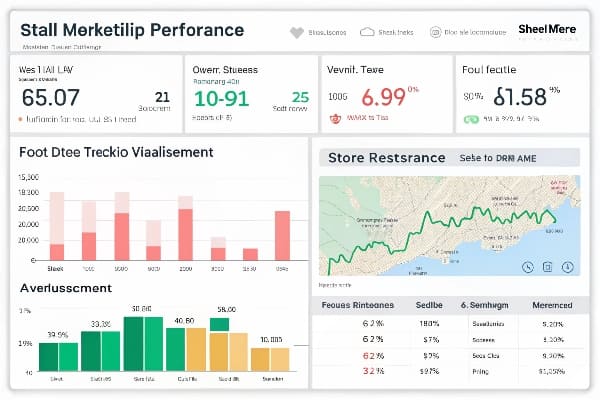
Tight margins push me to fix pain points fast. Stay with me and see how each step turns a flimsy stand into real stopping power.
What are the 5 steps of creating a display?
Crowded retail floors can confuse any maker. I break the build into five small wins that remove stress and waste.
The five steps are define goals, design, prototype, test, and launch.
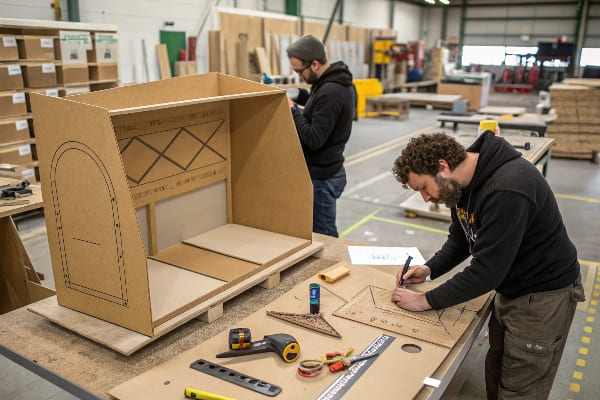
Zooming in on each step
A clear goal guides every cut. First, I write a single line that states why the display exists, like “lift trial sales by 20 % for our new energy bar1.” That line steers the next step—design. My design team and I sketch structure, copy, and print zones. We keep text short and use colors pulled from the brand’s hero SKU so shoppers link the stand to the shelf pack in one glance.\
Prototyping follows. In my Guangzhou plant we run a one-off on the same corrugate that will hit the line. I mail that sample to the client, David at Barnett Outdoors, and ask him to stress it with real crossbow bolts, not pillows. He often spots a weak corner we missed. We tweak folds or add an inner strut.\
Testing means more than weight. I drop the loaded unit in a box six times from one meter, copycatting the courier route. If edges peel or colors rub, we replace lamination or swap ink sets. Only when it passes does the launch start. Launch is not just shipping; it is training the store team with a one-page setup sheet2, so the display keeps its dignity on day sixty, not just day one.
What is CPG strategy?
Every brand fights for four seconds of shopper attention. My strategy picks the battles that matter and leaves the rest.
A CPG strategy aligns product, price, place, and promotion to win specific shoppers at the lowest cost.
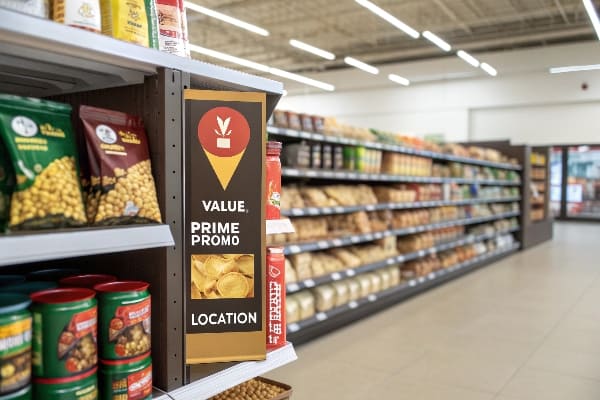
Making strategy simple
I once chased every trade show and ad slot I could pay for. Profits fell because my actions had no single thread. Now I map each move to one core shopper promise: “easy setup, field-ready displays3.” Product means rugged corrugate that survives warehouses from Texas heat to Ontario frost. Price sits in the sweet spot where repeat orders cover design loss leaders; I show clients the lifetime cost4 not the first invoice.\
Place is my key edge. By shipping flat, I halve pallet space versus wood fixtures, so buyers squeeze me into tight backrooms. Promotion ties it together. I push Google Search ads to sourcing engineers who type “custom cardboard bow display5.” The ad links to a landing page with a simple scroll, no flashy carousels.\
A small strategy feels humble, yet it guards focus. When a chain buyer asks for plastic, I thank him and hold back. Saying “no” lets me say a louder “yes” to the next crossbow launch that fits my lane.
How do you create an effective display?
An effective display turns browsers into buyers without a sales rep nearby. I follow a short checklist each time.
Focus on shopper need, clear message, bold contrast, handy placement, and sturdy build.
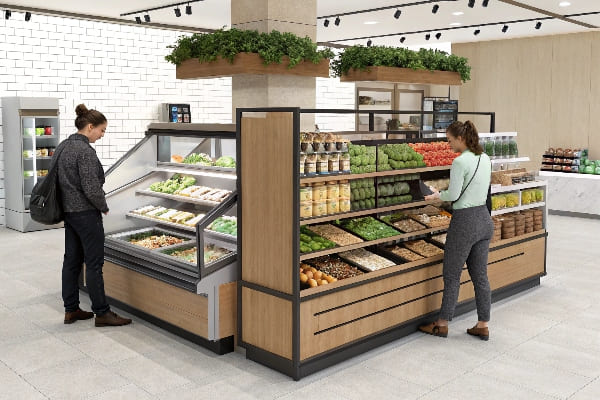
Building stopping power in five moves
1. Shopper need
I start by asking one question: what job does the shopper hire this product to do? A bow buyer seeks trust in safety and power. So I place a printed callout “350 fps tested” at eye level to meet that need in three words.
2. Clear message
A friend once told me, “If you cannot read it in a stride, it is useless.” I cap copy at twelve words. Longer claims move to QR codes.
3. Bold contrast
Colors pop when they oppose the aisle backdrop. In outdoor chains, warm wood racks fill space, so I use matte black corrugate with a neon green stroke pulled from Barnett’s logo. The display looks like gear, not décor.
4. Handy placement
I watch foot traffic counts. High-touch areas like the path between ammo and checkout lift impulse buys. I pitch store managers with a heat-map photo so they see the upside.
5. Sturdy build
Nothing kills trust faster than sagging sides. I spec double-wall E-flute for the main deck, and I glue, not tuck, load panels. A $0.20 glue bead saves a $200 order.
Together these moves lift sell-through by double digits in tests. More sales make room for the next promotion, and the cycle feeds growth.
What are the basics of CPG?
When I mentor interns, I start with a plain sheet and four bullet points. Each covers a bedrock rule of consumer goods.
The basics are brand identity, consistent quality, efficient supply, and retail partnership.
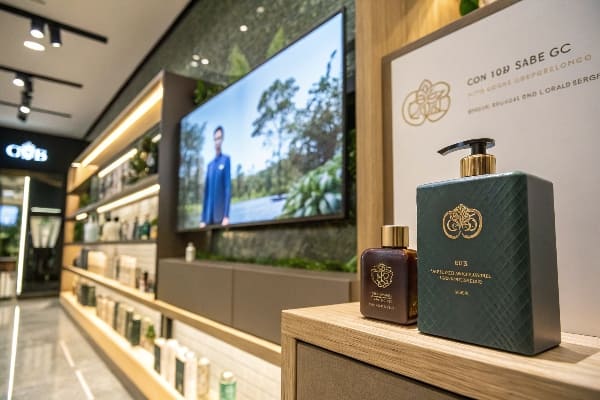
Walking through the four pillars
Brand identity6 sits first. A brand is more than a logo; it is the promise a shopper repeats to herself. Popdisplay promises “setup made easy.” So every email, box label, and trade-show booth carries that tone—helpful and direct.\
Consistent quality7 means the product on shelf in July must feel the same in December. I lock factory color recipes and flute grades. Any swap needs a signed change sheet. This saves me from the nightmare David faced once when another vendor switched to cheaper white-line chip without telling him; his bows bowed the stand in stores.\
Efficient supply8 drives margin. I run three lines, each tuned for a different run size. By batching designs with common die-cuts, I shave setup waste. Savings fund stronger coatings that cut returns.\
Retail partnership closes the loop. A buyer may love the sample but hate a late truck. I share a simple Gantt chart in Google Sheets, editable live, so store planners see real-time status. This transparency wins reorders even when storms delay ships, because the buyer feels informed, not blind.
What is CPG sequences?
Many marketers throw “sequence” around without context. I use it to map how a shopper meets, tries, and adopts a product over time.
A CPG sequence is the planned touch-point order that moves a shopper from awareness to repeat purchase.
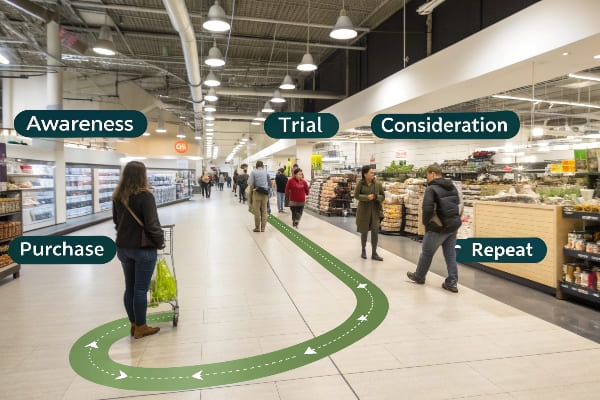
Mapping the journey step by step
I draw the sequence as five simple boxes on a whiteboard. Awareness9 starts online: a targeted video showing a hunter lifting a crossbow from my display. Interest sparks when the viewer clicks and lands on a quiz that matches bow draw weights to skill level. After a short email drip, the prospect walks into a store. My floor stand greets him with the same hero shot from the ad, sealing trial.\
The next box is first use10. Inside the package I place a service card that invites him to register for string care tips. Each tip email links to add-on blades and wax, nudging repeat sales.\
I once skipped the last box—advocacy11—and paid the price. Reviews were scarce, and rivals out-ranked me. Now I trigger an SMS one week after registration, asking for a photo review with a direct link. A small coupon thanks him. This closes the loop and feeds fresh UGC into the next awareness wave.\
Sequencing is not fancy tech. It is simply putting steps in the best order so the shopper never feels lost. A clear path saves ad budget and builds loyalty that price cuts cannot steal.
Conclusion
Clear goals, simple steps, and tight shopper focus turn humble cardboard into a profit engine.
Explore this link to discover proven strategies that can significantly boost trial sales for new products, enhancing your marketing efforts. ↩
Learn how a concise setup sheet can streamline training processes, ensuring your team is well-prepared for product launches and displays. ↩
This resource will provide insights into designing displays that are not only easy to set up but also ready for field use, enhancing your retail strategy. ↩
Understanding lifetime cost can significantly impact your pricing strategy and customer satisfaction; this link offers valuable insights. ↩
Explore this link to discover effective strategies and tips for designing impactful cardboard displays that attract attention. ↩
Understanding brand identity is crucial for building a strong connection with customers and ensuring consistent messaging across all platforms. ↩
Exploring the importance of consistent quality can help businesses enhance customer satisfaction and foster long-term loyalty. ↩
Learning about efficient supply can reveal strategies to optimize operations and improve profit margins in your business. ↩
Explore this resource to learn how to effectively create awareness for your brand and attract potential customers. ↩
Discover tips on improving customer experience during their first use, which can lead to higher satisfaction and repeat purchases. ↩
Learn about strategies to foster customer advocacy, which can significantly boost your brand’s reputation and reach. ↩

